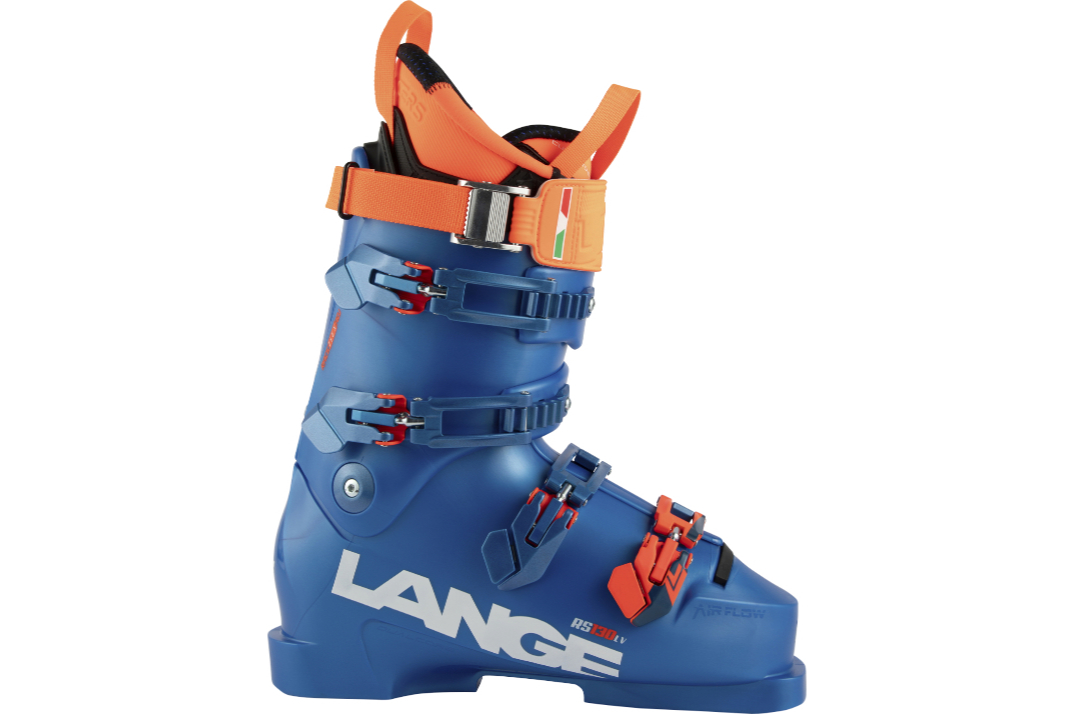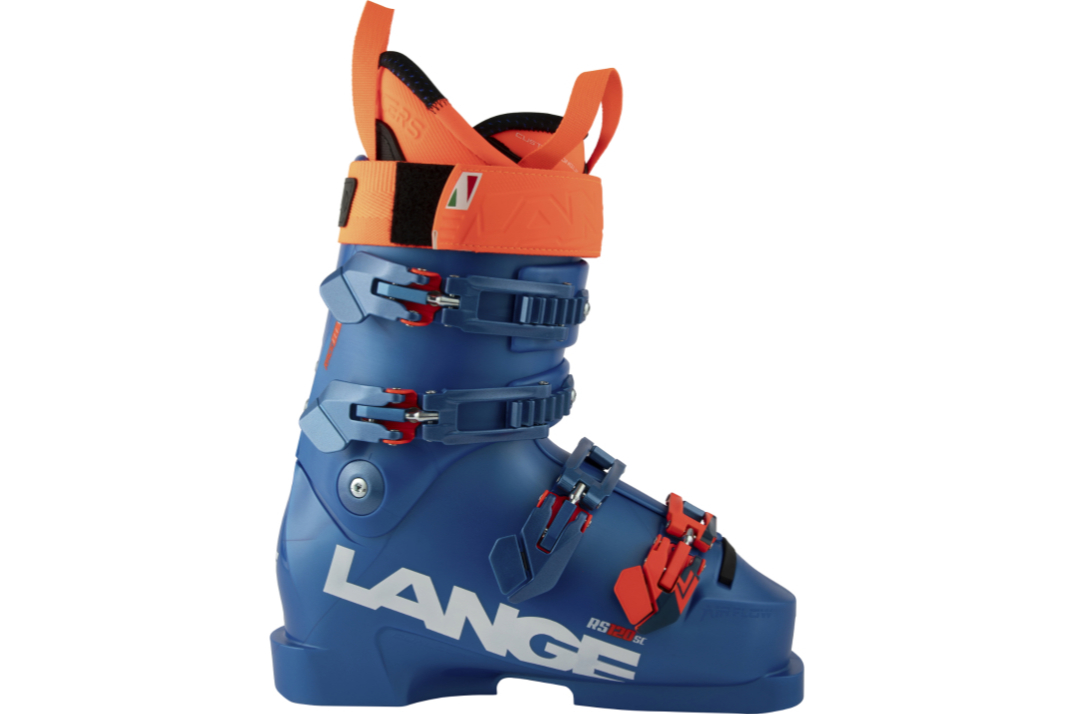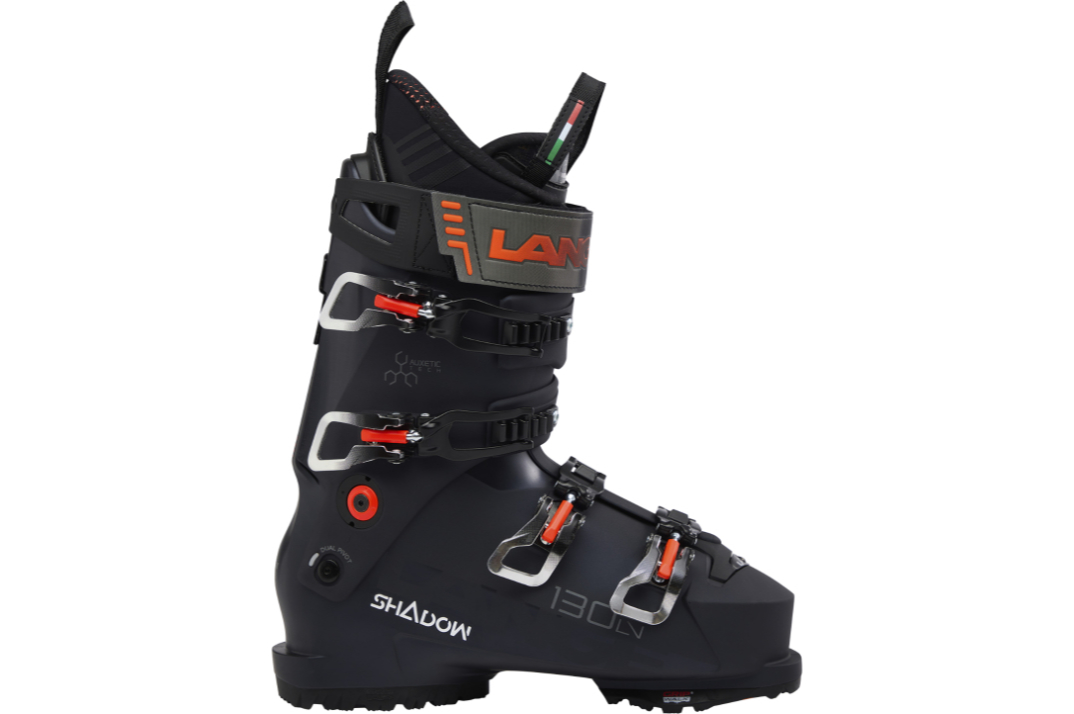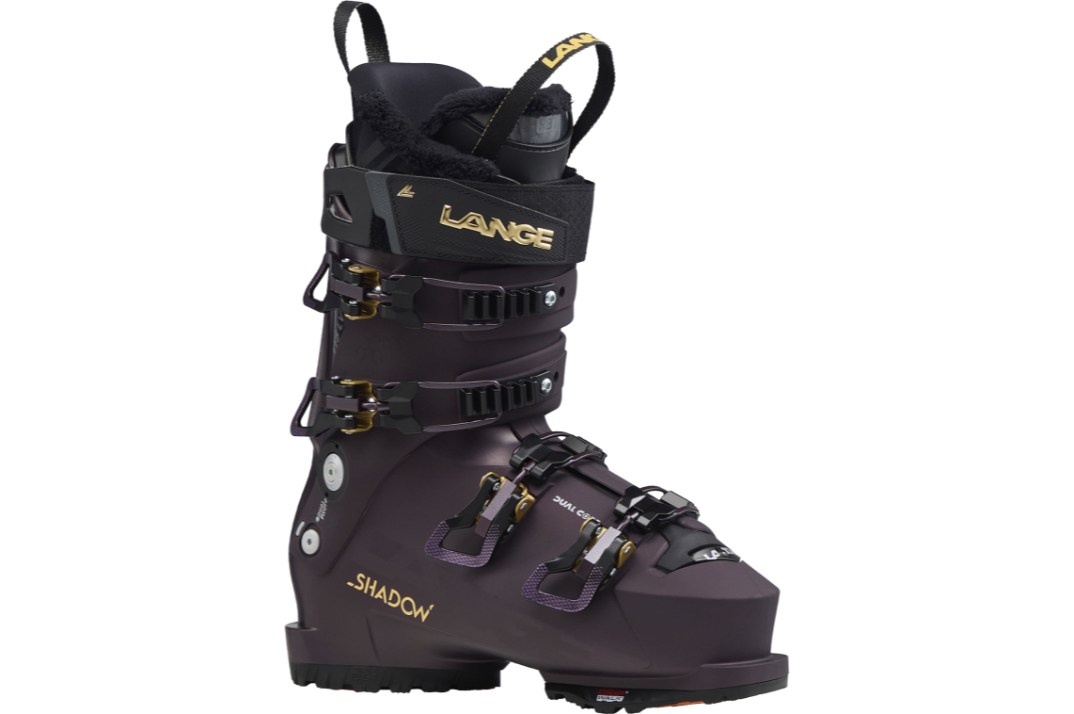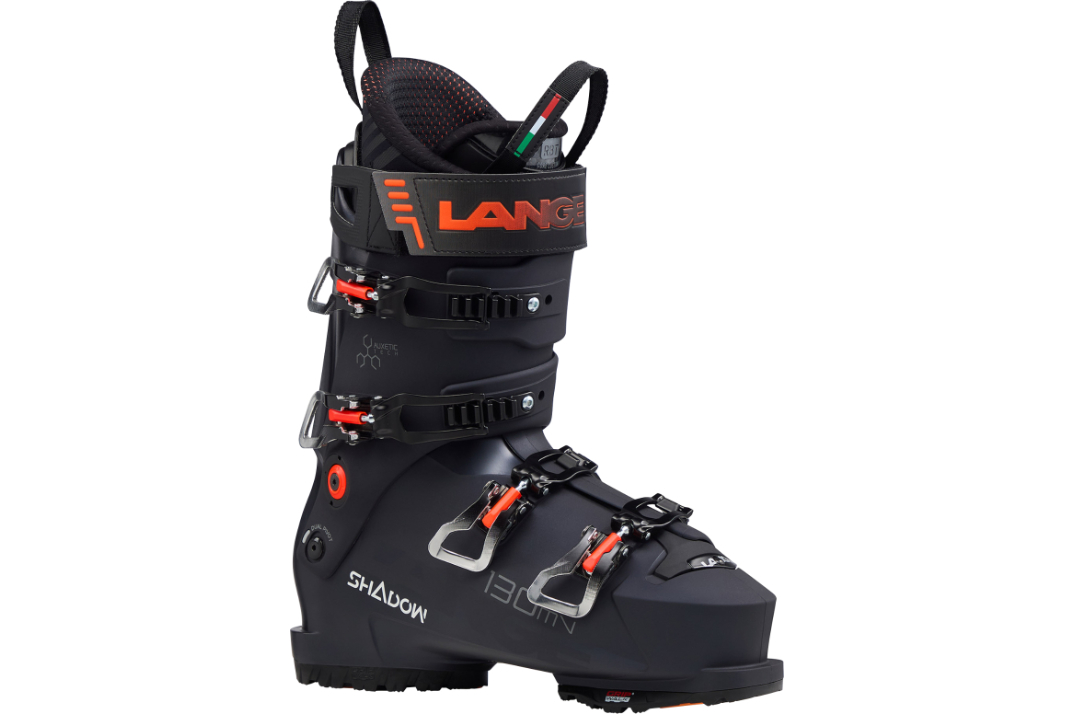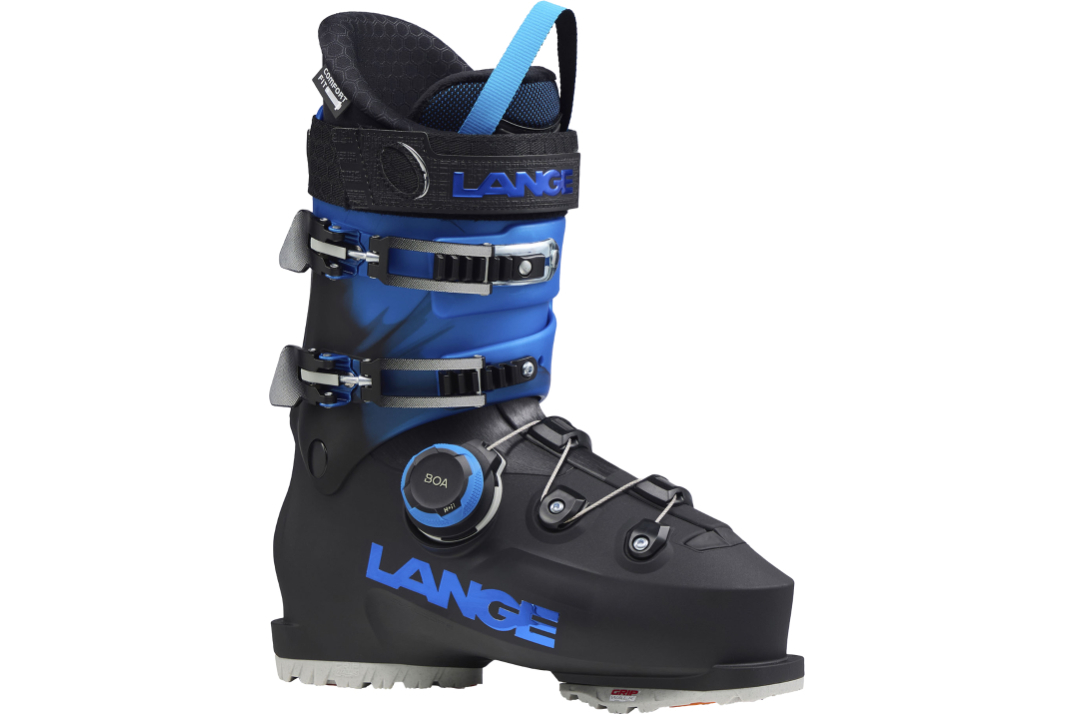Lange has traveled a long way as a brand without ever leaving home. The motherland for Lange lies between the boundaries indicated by the start and finish of a World Cup race. The plastic boot that truly revolutionized modern Alpine design, Lange long ago established the template not just for its own future lines, but for the entire market. To put it more plainly, it’s the most imitated boot ever.
Lange’s commitment to the classic, 4-buckle overlap shell is evident up, down and across its product line, whether for race or recreational applications, for men or for women and regardless of last volume (i.e., narrow, medium or wide). Lange has dropped at least 3 or 4 lines (I lost count) of hike-mode (HM) boots since the 2016/17 season, a slot now filled by the XT3 Free and XT3 Tour, the first models in Lange’s history that don’t borrow everything but a hike mode from an Alpine template.
No brand with a legacy as long as Lange’s has an unblemished record, and on the rare occasions when it strayed from its roots it made some serious faux pas, such as an hilariously bad rear-entry that it tossed together to demonstrate its disdain for the whole idea. But even when distracted by trend chasing, Lange never stopped making – and insisting on the unparalleled performance of – its classic race design. It doesn’t take a forensic scientist to discern the similarities between any Lange RS of yore and its current incarnation.
But that doesn’t mean Lange hasn’t tinkered with its flagship. Seven years ago, it changed how it molded its shells and cuffs, using two different durometers of PU and/or PE co-injected via 5 ports. This creates a sandwich construction called Dual Core that allows the plastic to be softer and more pliable in zones where elasticity is desirable (as in over the instep), and still stiff as a brick through the spine and sole.
This may sound like technical trivia, but lifelong Lange fans remember just how brutal it can be to try to pry off (note the “try”) a well-chilled Lange. Dual Core makes it possible to both put on and take off a pair of Lange RS 130’s without using the Jaws of Life. I know some of you still don’t believe me, so I’ll repeat it: all Lange Alpine boots are now as easy to don and doff as any other 4-buckle, overlap shell.
The nouveauté of 2019, Dual Core Light, injected ultralight Grilamid® and polyolefin instead of PU/PE into a plastic sandwich. Dual Core Light was created to make the now retired XT Free boots more competitive in the weight-sensitive AT market. Two since-retired models, Superleggera (100mm last) and Superleggera LV (97mm last), available in both men’s (120 flex) and women’s (110), put an Alpine sole on a Dual Core Light frame so in-resort skiers could catch the Lighter is Better wave.
The big news at Lange four years ago – literally and figuratively – was a line of wide-bodies that replaced the SX series. The LX design exemplified the trend towards building real performance into high-volume models, traditionally the unhappy home of mush buckets. The LX series has the same hierarchy of flexes found in boots made for the medium-sized masses, matched to a corresponding pecking order of thermoformable, 3D liners.
It’s hard to imagine Lange moving away from its foundational, 2-piece, 4-buckle shells, which due to their seniority seem as integral to the ski environment as snow. Driven by the surge of interest in backcountry skiing, Lange moved as far from its home base as they’ve ever ventured with the hybrid, hike-mode XT3. Yet even this AT boot remains at heart a race-bred Lange, with a narrow, 97mm last and a flex range that runs all the way up to 140. Even when Lange heads to the backcountry, it can’t leave it racing roots behind. If it did, it wouldn’t be a Lange. (BTW, Bob Gleason considered the XT3 the best boot – regardless of genre – in the 2024 Boot Test, orchestrated by the folks at Masterfit.)
Lange extended its range in the backcountry market just three years ago, taking the final step by putting a full-on, toe-to-heel Vibram®, ISO 9523, rockered sole on a 99mm, XT3 chassis. Both the XT3 Tour Pro (130 flex) and XT3 Tour Sport (110) have both a rockered shell footbed and outer sole, metal-to-metal Hike Mode connection, Dual Core Light construction (Grilamid® shells with PP cuffs) and a 53o total range of motion in hike mode. The lone addition to the 2023 Lange collection was a women’s XT3 Tour, in both Pro (115 flex) and Sport (95) incarnations.
Lange is to be commended for having the most coherent, consistent line of Alpine boots on the market, even if the alphabet soup of model names can be confusing at first. The challenge for Lange has always been how to be innovative (or at least appear to be), without screwing up what it does best. Solving this ever-present riddle falls to someone in whom we have the highest confidence, Thor Verdonk, tapped six years ago to lead Lange after many years of exemplary service for Lange and Rossignol in the U.S.
Thor and his team have solved the riddle. They effing solved it! The new design is called Shadow, and last season it was the biggest boot news of the year, perhaps the century. Lange’s R&D crew added an extension to the upper cuff below the primary rivet, then also riveted it, creating a new, longer lever arm. In conjunction with a new spine design – bid adieu to dual screws! – the change in lever arm takes the teeth out of a 130 flex without suffocating the responsiveness. Quite the opposite, the shorter travel of the new cuff seems to compound the skier’s effort, amplifying the effect forward flex resistance is supposed to have.
Allow me to insert an axiom of performance boot design: the most precious quality of a new boot is its response to forward flex, or how effectively it returns the skier to an unflexed (or at least, less flexed) position. The Shadow has rebound energy to spare, and it’s likely to retain the resilience of youth when conventional shell plastic has long since fatigued.
The new shell and cuff design of the Shadow would be enough to qualify it as Boot of the Year, but Lange didn’t stop there. They created a new inner boot with a unique cellular structure called Auxetic, that reacts to pressure uniformly in all directions, virtually eliminating even the chance of a pressure point. The only quibble that emerged from last spring’s testing was the fit felt roomy for some, a demerit that should be simple enough to address as long as the shell isn’t over-sized.
The cognoscenti who tried the first wave of Shadow 130 LV’s and found them a bit too loose were spot on; a Lange flagship in a 130 flex and low-volume last has to exude intimate envelopment, it can’t just hint at it. Working with a previously unknown inner boot material and totally new shell and cuff design set a high bar for degree of difficulty and damn near cleared it. To Lange’s credit, they didn’t sweep the issue under the proverbial rug, but instead whipped up a Shadow 140 LV, with a stouter and considerably snugger Auxetic liner. If you normally rock a 130, this is the Shadow you want.
There is only one reason for Lange to modify its RS race boots: to make them faster. Working in wind tunnels with the Formula 1 Sauber-Alfa Romeo Racing team, Lange has resculpted the RS chassis to make it more aerodynamic. The new Air Flow RS series also replaces the classic, two-rivet connection between cuff and shell with a solid block, reducing play and maximizing efficient energy transfer.
The hybrid XT3 is perhaps the most successful merger of in-resort accuracy on edge and the exigences of Alpine Touring. Its downhill performance was already on a par with the best non-race models; the 2025 XT3 – takes it up a notch by adding Dual Core construction to the cuff. Resilience under flex is the primal quality of an Alpine boot, exactly the quality that Dual Core was designed to deliver.
The 2026 Season
For many years, ski boot manufacturers didn’t make boots for high-volume feet, period. When HV boots finally tiptoed into the market, it was at the low-end, as if folks with larger-than-average feet couldn’t possibly be good enough to use a high-quality, high flex-index model. High-end, high-volume boots simply didn’t exist.
For 2026, Rossignol has addressed this problem by creating two distinctly different high-volume solutions. First, Rossi rounded out the brilliant Shadow family by adding a HV version for every flex index but the top-of-the-series Shadow 140 Pro, that only comes in a LV incarnation. Now that experts with HV extremities had an undiluted, high-performance model to call their own, Rossi had a free hand in making a better solution for the recreational skier for whom comfort and convenience are a higher priority than lightning responsiveness.
Enter a new all-mountain design, dubbed Concept, in a 103mm last with a shell and cuff configuration that simplifies entry and exit without surrendering skiing accuracy. The Concept models use the same basic shell design as Shadow, without the dual-pivot feature, so they promote high-performance skiing without mandating it. Skiers with flippers for feet are not only treated to a comfortable fit; thanks to the Concept’s neutral stance, they might actually have a good shot at becoming better skiers.
For skiers at the other end of both the foot-volume and skiing-proficiency spectra, Rossi has made a major upgrade to its Shadow LV inner boot. The liner material is a mix of PU and PE that readily conforms to the skier’s feet yet resists packing out, so the fit stays stable over time. A more accurately fitting liner can be a game changer for skiers of any ability, even those who can handle a 140-flex boot.

